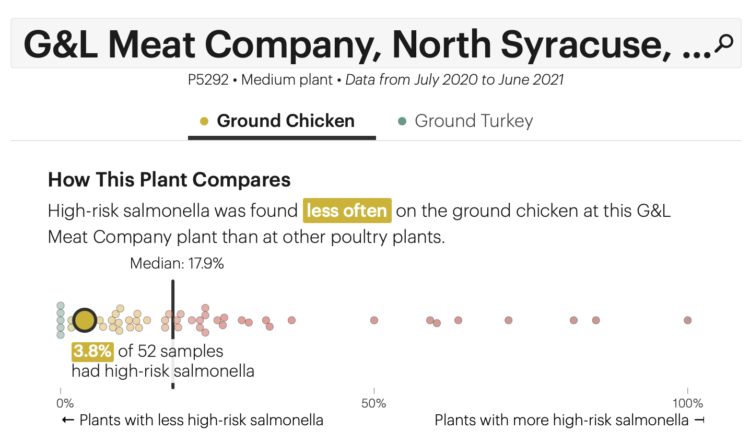The USDA recommends that you cook your chicken to at least 165°F to kill salmonella bacteria (time is also a factor), which appears to be more common than I would hope. ProPublica has a Chicken Checker so that you can find out. Look up the poultry product number on your pack of chicken, and you can see what percentage of USDA samples from the respective processing plant had salmonella.
A beeswarm chart shows how the plant’s rate compares to other plants that process the same type of poultry.
All I can think about now is that trend on social media from a while back where people cooked their chicken to rare. Mmm, salmonella.
Tags: chicken, food, ProPublica, salmonella


